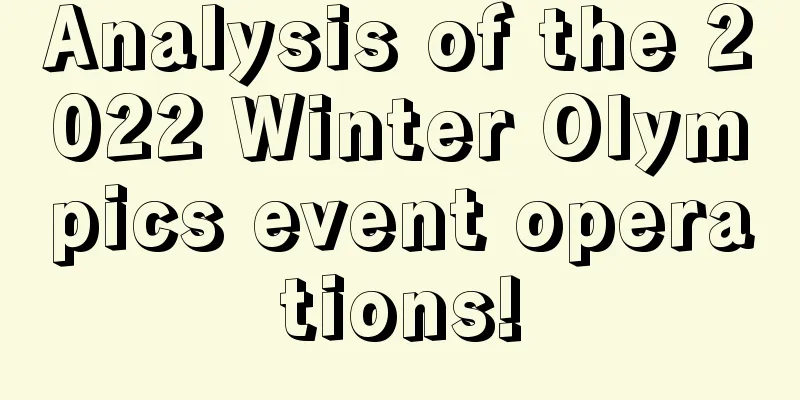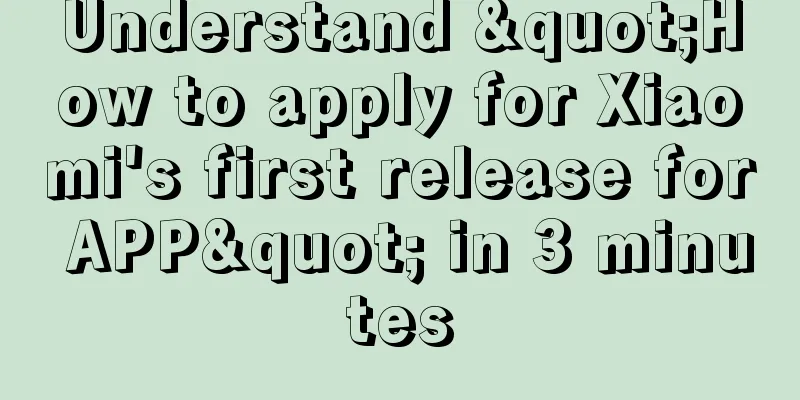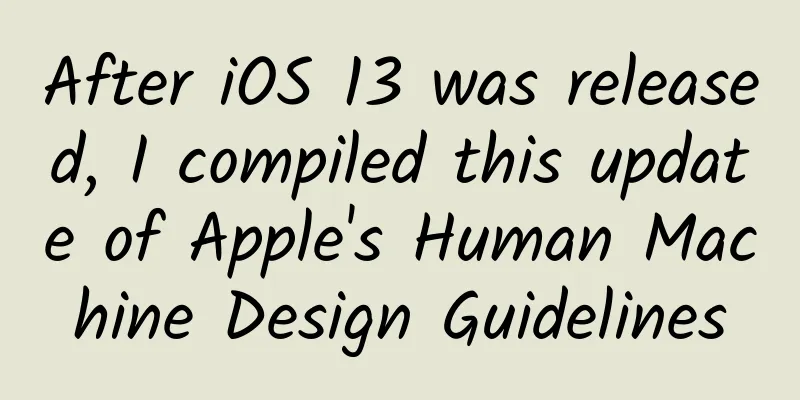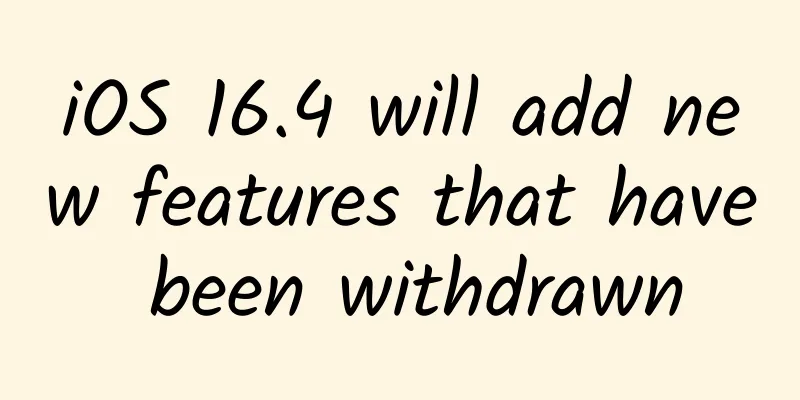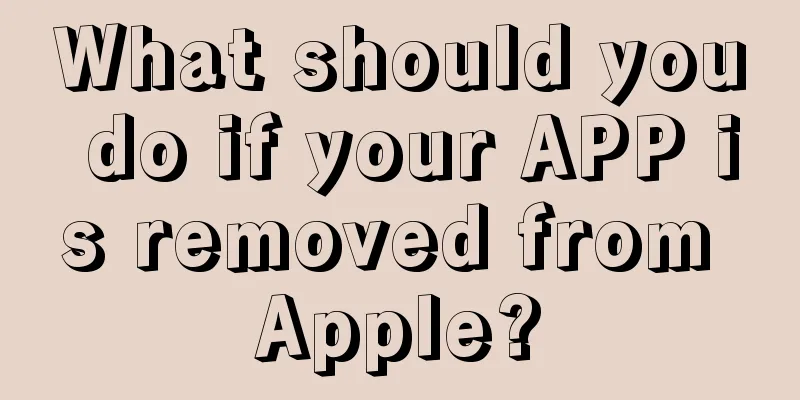How come mini programs support opening mobile apps?
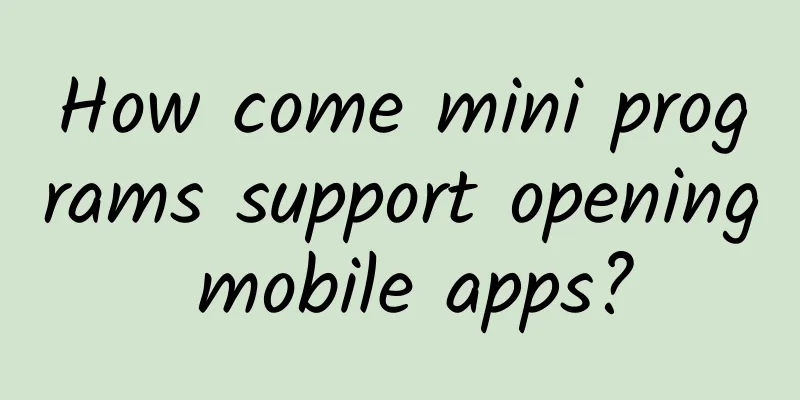
|
According to the article "Mini Programs Support Opening Mobile Apps" published by Apple's official WeChat public platform, Mini Programs have added two new functions:
The second function is that developers can customize the color style of the mini-program menu bar and customize the title area outside the mini-program menu according to their needs, such as setting the color of the title area. Here we mainly introduce the function of supporting opening mobile applications. Support opening mobile applications At first glance, it seems a bit like a headline party, but does it support opening mobile apps?
In fact, there is a hard requirement for opening mobile apps from mini programs: when users access pages shared from mobile apps to mini programs, they can open the source app. Let’s further explain this requirement. Most programs have WeChat sharing function. What we often do is to share a picture, a text or a URL link. We can share it with friends (including groups), Moments or add it to personal collections, as follows: We can also share mini-programs, as shown in the figure: The above is a small program shared to WeChat by a ticket grabbing software (Zhixing). Friends can click on the small program to help speed up. According to the official article, if there is a button in the small program shared to WeChat, the implementation is as follows:
Then when you click this button, the source app will be opened. In other cases, it cannot be opened. Here is a diagram showing whether a mobile app can be opened: Here, the mini program gives a concept of scene value. Only the mini program with a scene value of 1036 (and a status value of true or false, which determines whether the APP can be opened. The scene value is 1036 and the status value is true) can open the source APP. That is, the mini program cannot open any app, but can only jump back to the APP that shared the mini program card. The official document also explains this logo: During the life cycle of the mini program, the initial value of this state is false, and it will change each time the mini program is opened (whether it is started or switched to the foreground):
Regarding the second point, 1089 and 1090, my understanding is that the mini program is similar to the mobile app. It is not closed, but in the background. Therefore, 1089 and 1090 only call the mini program to the foreground, so the mini program status remains unchanged. If the status is true, the mobile app can also be opened. The above is an introduction to opening mobile applications with mini programs. Next, let’s take a look at the specific code implementation. Code to implement the shared applet to open the mobile app (iOS version, Android is similar) The first thing to do is to create a new project and then integrate WeChat sharing. For details on how to integrate, please refer to the official website integration document. After integration, add a button to the page and trigger the implementation as follows:
Can all apps share mini programs using the above implementation method? The answer is no. According to the official document:
In other words, there are restrictions on sharing mini programs:
After testing, an account cannot be registered for both WeChat Open Platform and WeChat Public Platform at the same time. In other words, if your account is registered for WeChat Open Platform, then the account cannot be registered for WeChat Public Platform again.
What the official WeChat Open Platform account means is that there are both APPs and Mini Programs under one account (because Mini Programs are developed on WeChat Public Platform). After opening the WeChat Open Platform page, the first item is easy to understand: If you want to share a Mini Program in a mobile app, you must bind the WeChat Mini Program to the WeChat Open Platform account where the app is located, so that you can share the Mini Program in the app. This is what the official statement means that the app and the Mini Program belong to the same WeChat Open Platform account. So how does the APP know which mini program to share? Or how is the APP connected to the mini program? This depends on the code above (assuming you put the mini program and APP under the same open platform account), which contains a line:
The userName is the userName of the mini program. You can log in to the WeChat Official Account Platform | Mini Program, and then check it in Settings -> Basic Settings. There is an original id, which is the userName of the mini program. In this way, you will associate the sharing of the APP with the mini program. There is another question: How can the shared mini program open the specified page? This requires looking at another line of code:
You need to set the path of the mini program. The page of this path is the page that opens when you click on the shared mini program. Here is a picture of the mini program development tool: Pages refers to pages. For example, the pages folder in the figure above contains three pages: detail, index, and logs. Among them:
So if you want to jump to the detail page, you should write "pages/detail/detail" when setting the path of wxMiniObject. In this way, you can click on the shared applet to enter the specified page (if the page requires parameters, you must also pass them when sharing).
Here the suffix is actually defined by the WeChat applet itself. At this time, the scene value of the mini program you shared is 1036, and the status is true. If there is a button with open-type "launchApp" in your mini program, you will jump back to your mobile app by clicking the button. If you want to send content back to the app, you can set app-parameter. Like this small button:
At this point, I think you should have a general understanding of how mini programs support opening mobile apps. Summarize Mini Programs do not support opening all mobile apps. Even if the mobile apps and Mini Programs are under the same WeChat Open Platform account, the Mini Programs may not be able to be opened. It depends on the specific scenario. Outlook The fact that mini programs can jump to mobile apps is a big improvement. In the future, mini programs will be able to be opened directly from apps, not just by sharing. In the future, we may be able to directly open a mini program by clicking a button in a mobile app, and then return to the mobile app after the mini program operation is completed. (For example, for WeChat payment, you can jump from the mobile app to the mini program to make WeChat payment, and return to the mobile app directly after the payment is successful) The fact that mini programs can jump to mobile apps is a big improvement. In the future, mini programs will be able to be opened directly from apps, not just by sharing. In the future, we may be able to directly open a mini program by clicking a button in a mobile app, and then return to the mobile app after the mini program operation is completed. (For example, for WeChat payment, you can jump from the mobile app to the mini program to make WeChat payment, and return to the mobile app directly after the payment is successful) |
<<: WeChat mini-programs can now jump to mobile apps
>>: Apple removes paid copycat version of "Travel Frog", you may have a fake "son"
Recommend
Everyone must learn the efficient mind mapping course, improve work and study efficiency by 10 times 30 practical lessons
Do you often have such confusion at work? The wor...
Apple releases latest operating system, Siri can learn to quack like a duck
As long as you upgrade to Apple’s latest iPhone o...
How does Baodao Glasses reconstruct its private domain operations?
It is said that private domain operation is a top...
Are those extremely low-level information flow ads really effective?
The online game advertisement mentioned by the to...
Japanese advertising is really worth learning
When talking about Japan, the first thing that co...
Analysis of group buying gameplay: Why is Pinduoduo so popular?
In 2017, after Pinduoduo launched a large number ...
Ren Zhengfei: Huawei can build a Hongmeng mobile phone system comparable to iOS in less than 2-3 years
On September 19, after the Huawei Mate 30 series ...
How to analyze user activity index?
This is a very boring physical job, but it is the...
Swift theme color top solution
1. Conventional theme color usage points Before a...
iOS Native and JavaScript Interaction
When it comes to the interaction between Native a...
Detailed explanation of R8 in Android
Google released R8 as a replacement for Proguard ...
Is it true that there will be no Qingming Festival holiday in 2022? Why not take a holiday?
As the Qingming Festival approaches, the local ep...
Insights into new marketing trends in 2022
2022 is getting closer and closer. Looking back a...
Google Android 12 Developer Preview 2 released: supports rounded UI, better picture-in-picture mode
[[388291]] IT Home reported on March 18 that fore...
How to improve the weight of Douyin? Tips to improve Douyin's weight
This article mainly introduces how to improve the...

